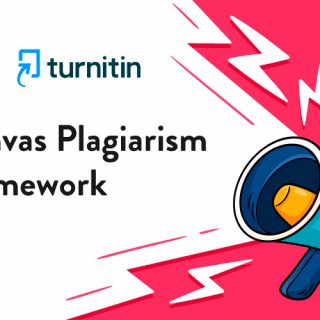
Asynchronous Learning
This video highlights some key considerations when designing synchronous and asynchronous learning activities to support teaching and learning online.
10 Essentials for Asynchronous Learning
In order to prioritise high-value interactions for face-to-face or live synchronous online sessions, it is important to design a variety of flexible online asynchronous activities, but where to start? Follow these top 10 essential tips to ensure your students can learn effectively at their own pace and in their own time and space. In addition, why not take a look at this infographic for a summary of ideas on different synchronous and asynchronous online activities that could work for you and your students.
Key considerations when planning and designing asynchronous learning:
CURRICULUM REVIEW
Review your learning outcomes and think about how students can meet these learning outcomes through a range of chunked (or bite-size) asynchronous activities. You might want to think about using tried and tested digital curriculum design tools to support this planning process such as ABC Learning Design.
ACTIVITIES BEFORE CONTENT
When planning for asynchronous learning, think about the activities students will complete rather than providing content for them to passively consume. What will students do when they land on a Canvas Page? Making online learning active helps to avoid content overload and ensures that students are engaged in active learning and meaningful processing interactions.
PROTECT YOUR TIME
Use your time efficiently. Include upfront information about when you will be available for contact and stick to it. Set out clear expectations in weekly announcements, roadmaps, task lists etc. Establish and maintain a clear routine so students get into the rhythm of the course.
COURSE STRUCTURE
When planning, it’s a good idea to sketch out the structure and flow of the learning activities, and how they will sequence, link together and build on from each other in terms of progression. It’s also an idea to consider the breadth and variety of activities to ensure you capture attention. Note that the use of Modules in Canvas can facilitate this.
COMMUNICATION & COMMUNITY
Think about how to use features like Email, Discussions, Announcements or Group spaces in Canvas throughout your course to promote social presence, connection, peer learning and a collaborative culture. Also remember to keep a level of informality in some of your interactions to allow students to get to know you. More information: Asynchronous community building and engagement
CLEAR INSTRUCTIONAL LANGUAGE
Use concise instructional language and effective questioning where appropriate to guide and support students. It is extremely important to provide explicit scaffolding and support for students in asynchronous activities, as without it students can feel lost or unsure of what is required. You can also include suggestions about pacing and self-management to promote students’ executive functioning skills.
SIGNPOST SUPPORT
You can’t do it all. Your students might need support from a range of internal University services (such as the Library, Information Services, Disability Services or Student Wellbeing) as well as technical support from Canvas Tier1. Make sure you signpost additional services so your students know where to access relevant support.
FEEDBACK
When students are working through activities in their own time it can be harder for you to get a sense of how they are progressing or if they are struggling or need extra help. Provide regular feedback to students and add opportunities for students to self-evaluate their own learning through reflective surveys. Add forms or quizzes to capture student feedback on the course at regular intervals or check-points.
KEEP IT SIMPLE
As mentioned above, consistency, connection, communication and clarity of instruction are key. Variety is an important aspect of engagement but keep things simple. Use Canvas features and Office365 products well before trying to incorporate any third-party digital tools.
ACCESSIBILITY & INCLUSION
Last, but by no means least, always use accessible design practices and consider learner variability. Expect to have a diverse student cohort from a range of backgrounds, with a wide-ranging scope of abilities and operating in various different circumstances. Provide choice and allow students to be creative in the way they choose to present their assessments where possible. Also, remember that not all asynchronous activities have to be digital or ‘online’. Design analogue activities or those that can be completed ‘offline’ such as making notes, sketching plans, writing out questions/reflections etc. Not only does this support students with unreliable Wi-Fi, it’s important to reinforce the value of stepping away from the screen (for a number of reasons, not least student mental health and well-being).
CURRICULUM REVIEW
Review your learning outcomes and think about how students can meet these learning outcomes through a range of chunked (or bite-size) asynchronous activities. You might want to think about using tried and tested digital curriculum design tools to support this planning process such as ABC Learning Design.
ACTIVITIES BEFORE CONTENT
When planning for asynchronous learning, think about the activities students will complete rather than providing content for them to passively consume. What will students do when they land on a Canvas Page? Making online learning active helps to avoid content overload and ensures that students are engaged in active learning and meaningful processing interactions.
PROTECT YOUR TIME
Use your time efficiently. Include upfront information about when you will be available for contact and stick to it. Set out clear expectations in weekly announcements, roadmaps, task lists etc. Establish and maintain a clear routine so students get into the rhythm of the course.
COURSE STRUCTURE
When planning, it’s a good idea to sketch out the structure and flow of the learning activities, and how they will sequence, link together and build on from each other in terms of progression. It’s also an idea to consider the breadth and variety of activities to ensure you capture attention. Note that the use of Modules in Canvas can facilitate this.
COMMUNICATION & COMMUNITY
Think about how to use features like Email, Discussions, Announcements or Group spaces in Canvas throughout your course to promote social presence, connection, peer learning and a collaborative culture. Also remember to keep a level of informality in some of your interactions to allow students to get to know you. More information: Asynchronous community building and engagement
CLEAR INSTRUCTIONAL LANGUAGE
Use concise instructional language and effective questioning where appropriate to guide and support students. It is extremely important to provide explicit scaffolding and support for students in asynchronous activities, as without it students can feel lost or unsure of what is required. You can also include suggestions about pacing and self-management to promote students’ executive functioning skills.
SIGNPOST SUPPORT
You can’t do it all. Your students might need support from a range of internal University services (such as the Library, Information Services, Disability Services or Student Wellbeing) as well as technical support from Canvas Tier1. Make sure you signpost additional services so your students know where to access relevant support.
FEEDBACK
When students are working through activities in their own time it can be harder for you to get a sense of how they are progressing or if they are struggling or need extra help. Provide regular feedback to students and add opportunities for students to self-evaluate their own learning through reflective surveys. Add forms or quizzes to capture student feedback on the course at regular intervals or check-points.
KEEP IT SIMPLE
As mentioned above, consistency, connection, communication and clarity of instruction are key. Variety is an important aspect of engagement but keep things simple. Use Canvas features and Office365 products well before trying to incorporate any third-party digital tools.
ACCESSIBILITY & INCLUSION
Last, but by no means least, always use accessible design practices and consider learner variability. Expect to have a diverse student cohort from a range of backgrounds, with a wide-ranging scope of abilities and operating in various different circumstances. Provide choice and allow students to be creative in the way they choose to present their assessments where possible. Also, remember that not all asynchronous activities have to be digital or ‘online’. Design analogue activities or those that can be completed ‘offline’ such as making notes, sketching plans, writing out questions/reflections etc. Not only does this support students with unreliable Wi-Fi, it’s important to reinforce the value of stepping away from the screen (for a number of reasons, not least student mental health and well-being).

